New year, new rule changes. The 2024 USA Pickleball rule book is now available, and it brings a few notable changes to the sport's dynamic.
What's really special about the way changes are made to pickleball's rules is that any USA Pickleball member can make suggestions – of course, that doesn't mean they'll make the cut, but the process begins with the highly democratic process of fielding requests.
From over 90 suggestions made to USAP's board of directors, only 27 were approved for the upcoming year's rulebook.
Here are some of the most significant alterations to the rules effective in 2024:
Correcting Server, Receiver and Player Position Errors (4.B.9)
In last year's rule changes, players were told to ask "Am I good?" to clarify their position or server status to avoid incorrect server/returner error faults.
Now, faults for incorrect servers, receivers, or wrongful player positions are eliminated. The ref is now responsible to correct any player errors before calling the score.
But what happens if the point is played, then they realize a serve or returner was in the wrong position?
- If the referee or a player stops a rally in progress to correctly identify a player/position error, the rally shall be replayed. If a player stops a rally and incorrectly identifies a player/position error, it is a fault on the player who stopped the rally. If the referee stops a rally in progress and incorrectly identifies a player/position error, the rally shall be replayed.
- 4.B.9.b. If a player/position error is identified after the rally has played out, the rally shall stand.
Catch or Carry Ball on the Paddle (7.L)
By slashing the words "deliberately" and "unintentional" from the previous rulebook, this change essentially removes the responsibility from a referee to determine if a player intended to carry the ball on a paddle. If a carry occurs, it's an automatic fault.
Wait, what's the difference between a carry and a double-hit, you ask? Good question:
- A "carry" means hitting the ball in such a way that it does not bounce away from the paddle but is carried along on the face of the paddle.
- A "double hit" is legally permissible if the player hits the ball twice in a continuous, single-direction stroke. If they hit it twice with more intention, it's a fault.
Paddle Specifications (2.E.2/2.E.5.a/2.E.5.c)
So what are the new specifications? Look at the 2023 rulebook's specifications, which read: "Surface. The paddle’s hitting surface shall not contain delamination, holes, cracks, rough textures, or indentations that break the paddle skin or surface."
The 2024 specs add an important clause to the end of that sentence, "...or any objects or features that allow a player to impart excessive spin on the ball."
Ok, but what does THAT mean? Let's look at the subsection about paddle alterations and surface restrictions for potential answers:
- Decals and tape can extend no farther than 1.0 inch (2.54 cm) above the top of the grip nor more than 0.5 inch (1.27 cm) inside the outer edge of a paddle or, if an edge guard is in place, 0.5 inch inside the edge guard (lead tape affects swing weight and, in some cases, potential spin).
- Prohibited surface & mechanical features:
- Anti-skid paint or any paint textured with sand, rubber particles, or any material that causes additional spin
- Rubber and synthetic rubber
- Sandpaper characteristics
- Moving parts that can increase head momentum
Draping Net (2.C.6/11.L.5.b)
This change should eliminate most of the confusion over shots that interact with a draping net.
If the ball bounces against a net that's on the ground, it's a replay, simple as that.
Medical Time-Outs (10.B.2.c)
Here's one we hope we don't have to see or experience on the court. This seems like a sensitive, generous approach to maintaining player comfort and safety. Good job, USAP.
...Rally scoring?
We'd be remiss if we didn't mention that USA Pickleball's board is currently considering their position on rally scoring. More details should emerge soon.










